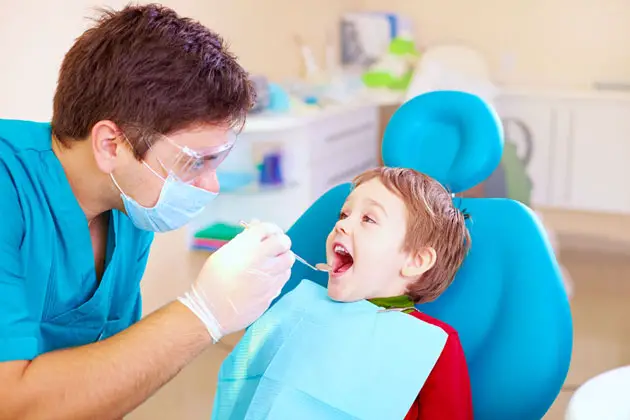Can you believe that you might need to be taught how to breathe properly? And that by not doing so, your overall health could be impacted? Did you ever think that your child’s craniofacial development would be poorly influenced by not breathing properly?
Who thought that something our bodies do involuntarily would require such practice? It turns out that the shape, size and functionality of our airways plays an integral role in how our faces develop—which, in turn, helps establish an overall level of wellness as a child and as an adult.
Modern Habits and How Form Follows Function
Let’s begin by thinking about how our early ancestors functioned. They had wide, broad jaws, balanced profiles and could fit all 32 teeth in their mouths. They did not have crowding or malocclusions. Their facial form was a result of how they functioned.
Over the course of thousands of years, however, the introduction of new environmental stressors has changed the way our bodies function and develop. Here’s an example: over time, our diet has softened with the introduction of sugar, refined foods and additives. This shift away from raw, whole foods that require masticatory (chewing) effort has led to smaller jaws, smaller airways, crooked teeth and breathing compensations. Poor posture and hanging our heads over phones for hours a day further feed into the need for breathing compensations.
Our 21st century faces, and the extraordinary demand for orthodontics in over 80% of the population, are the result of changes to how we breathe due to environmental stressors. As a fellow colleague explains, “the changing shape of the face is a function of soft-tissue dysfunction.” Crooked teeth are a symptom of a larger issue. It’s the soft-tissue dysfunction (the position of the tongue, oral habits, mouth breathing, snoring) that is creating the need for orthodontics and dentofacial orthopedics.
What Does This All Mean?
First, we must understand the extent to which the decreased function of our jaw muscles and improper positioning of our tongues can adversely affect facial form. It’s a cycle—the jaw muscles and the tongue work against you when you don’t make them work for you!
Look around more closely and you may see breathing compensations in action. Is someone close to you experiencing interrupted sleep or regularly snores? Does your child routinely breathe through her mouth? Have you ever noticed a “low tongue posture” (the tongue sitting on the teeth instead of the roof of the mouth)? Does someone you care about speak with a lisp or swallow with his tongue in a forward position? These are all indicators of a small airway.
What does our appearance end up looking like when the tongue is not on the palate and our lips are apart when we breathe? We see longer faces, dark circles under our eyes due to a poor airway, upper and lower jaws that are small and set back, all of which create a convex profile (“no chin”) and possibly tooth crowding. It may also appear as if we have “buck teeth” and a huge overbite. But that is because our small upper jaw is adversely positioning the lower jaw down and back, instead of down and forward. Imbalanced jaws are stuck in a growth pattern that only worsens over time, all the while impeding airway space—not a good thing for your child.
Lips Closed, Breathe Through Your Nose
We want our upper jaw to be wide and our lower jaw to come forward so that our airway functions properly. Our bodies are programmed to grow the jaws down and forward, but only under the proper environmental circumstances. I like to tell my daughter: “Lips closed, breath through your nose!” This practice ensures that her tongue is properly positioned on the roof of her mouth and can create a nice, wide upper jaw, acting as a “scaffolding” for all the permanent teeth.
As parents, we all aim to raise happy, healthy, thriving children. Your orthodontist, pediatric dentist and pediatrician should not be waiting until “all the permanent teeth have fallen out” to start treatment. We should be looking at tonsils and adenoids, breathing habits, sleep patterns and diets—all from infancy.
Orthodontics is not just about straightening teeth. It’s about creating beautiful, balanced faces that allow proper airflow and, in turn, promote overall health and wellness by eliminating soft-tissue dysfunction. Don’t hesitate to consult us to determine if early intervention can help your child breathe, look and function better.
For more information, contact Merissa Blais, DDS, Blais Orthodontics, PC, 2 Overhill Road, #300, Scarsdale, NY; 914-472-9595; www.blaisortho.com



















